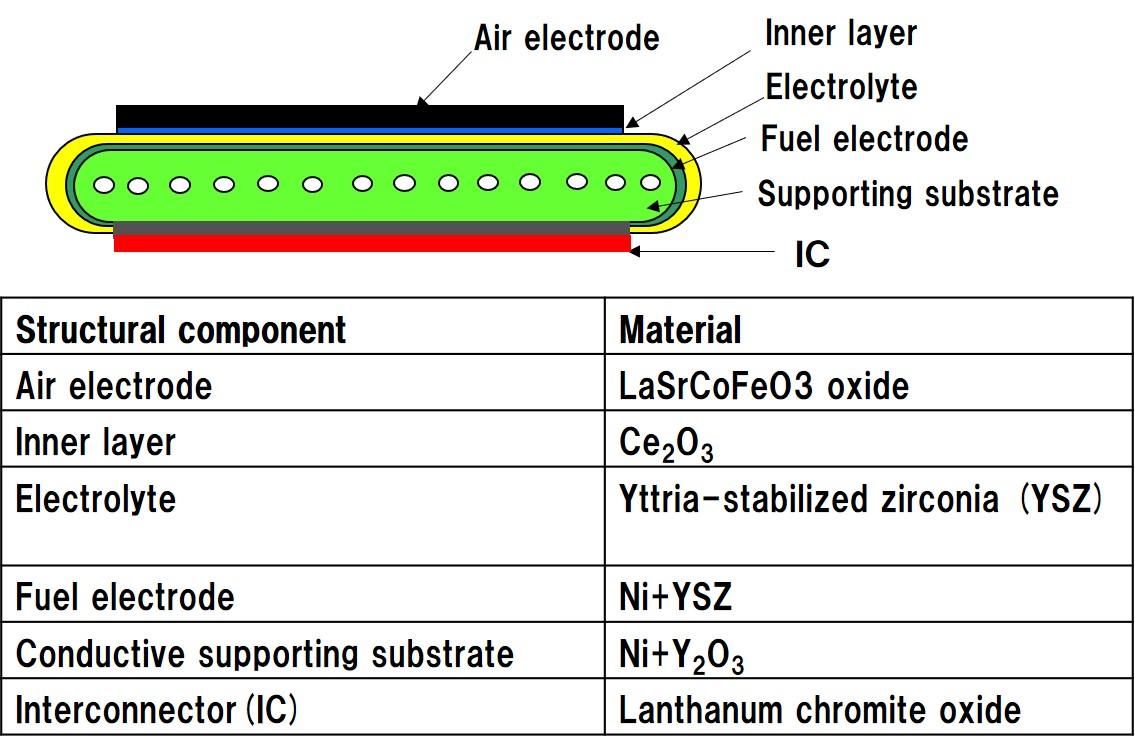Kyocera's patented technology that enabled the world's first residential fuel cell (SOFC type) earns Invention Award in the 2019 National Commendation for Invention

Technology developed by Kyocera to boost the durability of compact solid oxide fuel cells (SOFC) suitable for use in residential applications (JP Patent Number. 3996861) has been recognized with Invention Award in the 2019 National Commendation for Invention presented by the Japan Institute of Invention and Innovation. This patent covers proprietary Kyocera technology that triggered a technological breakthrough and made possible the world's first residential SOFC. Kyocera has applied for more than 2,000 SOFC-related patents, and the technology and accumulated expertise protected by those patents underlie the high generating efficiency and reliability of Kyocera SOFCs.
SOFCs: Exceptional generating efficiency
Of the various types of fuel cells that are available, SOFCs offer particularly high generating efficiency. However, due to the difficulty of manufacturing compact SOFCs, conventional wisdom held that it would be impossible to commercialize a compact SOFC small enough for use in the typical home. Recognizing that SOFCs for standard residential use would be essential in the drive to realize a hydrogen-based, low-carbon society, Kyocera embraced the challenge of developing a compact SOFC based on fine ceramic technology in 1985.
A new design worked out by Kyocera: Cells with cylinder-plate fuel electrode supports
The low durability of the cell that lay at the heart of existing SOFC designs quickly became a major issue in the development project. Kyocera determined that one cause of low durability was the fact that the fuel electrode and the solid electrolyte had a large difference between their respective coefficients of thermal expansion. This difference led to both the cracking of the fuel electrode and separation of solid electrolyte, thereby reducing the cell’s durability.

To resolve this issue, Kyocera took a fresh look at the cell architecture and invented a fuel cell with a new design as illustrated in the figure to the left.
Nickel (Ni) and nickel oxide (NiO) are used in the supporting substrate in the newly designed cell so that it will be conductive. However, these materials both have high coefficients of thermal expansion. To address the problems that arise from a mismatch of thermal properties, Kyocera used a number of rare-earth oxides made from elements such as yttrium (Y) to lower the content of Ni and NiO in the supporting substrate.
In this way, the company was able to bring the coefficient of thermal expansion of the supporting substrate closer to that of the solid electrolyte and fuel electrode in order to limit cracking of the fuel electrode and separation of the solid electrolyte.
Furthermore, Kyocera succeeded in limiting diffusion of the raw materials used to fabricate the fuel electrode, minimizing the decline in polarization resistance.

The new design developed by Kyocera enables high-strength cells that also deliver high output, leading to its adoption in the world's first residential fuel cell.
This year, the technology received Invention Award in the 2019 National Commendation for Invention in recognition of its contribution to the widespread adoption of fuel cell systems.
Kyocera will draw on the accolade as it embraces the ongoing challenge of further increasing product performance while helping realize a hydrogen-based, low-carbon society.
Japanese Patent No. 3996861 (Google Patent)
*The information in this article is current as of the time of publication (August 1, 2019). Numerical values and other data presented here may differ from the latest information.
Inquiries
Please contact us at the number below for inquiries about intellectual property.

